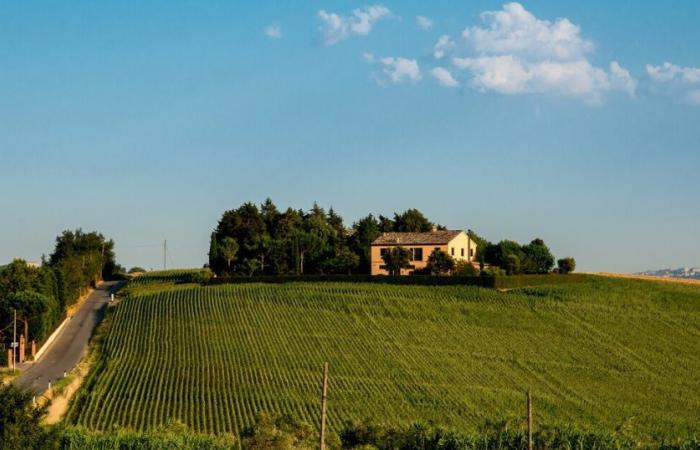The neo-Palladian house designed by architect Valadier will now become a co-housing space: those people who lost their homes due to the 2016 earthquake will live there
It happens that a neo-Palladian villa designed by the Roman architect Giuseppe Valadier immediately after the re-establishment of the ancien régime in 1815 becomes an alternative form of social housing. In the Marche, not far from Tolentino where the last battle of the Napoleonic troops led by Gioacchino Murat took place, the municipality of Treia has in fact managed to restore the caretaker’s house of Villa La Quiete, transforming it into accommodation for those who had lost their homes with the 2016 earthquake. This is the first act of the broader and more ambitious project to recover the villa and all its park financed with Pnrr funds, a small masterpiece of the outgoing mayor Franco Capponi. In fact, the villa had years of splendor and long periods of abandonment in which it was also looted. Valadier worked a lot both in Treia (Folchi Vici hunting lodge, Accademia Georgica) and in the nearby municipalities (Palazzo Conti-Ugolini in Macerata, Church of Saints Pietro Paolo and Donato in Corridonia, Collegiate Church in Monte San Pietrangeli) even if he is better known for major Roman projects such as the renovation of Piazza del Popolo and the clock on the facade of San Pietro.
In fact, his father Louis was a French watchmaker and therefore his son, already active as an architect and restorer under Pius VI, was taken into custody by the Jacobins when they occupied Rome and immediately forgiven upon the return of Pius VII in need of expert technicians to get the Papal State back on its feet. Due to his political ambiguity, Valadier was detested by Bruno Zevi and little studied like Marcello Piacentini who like him went through three different regimes (monarchy, fascism, republic) without attracting adequate historiographical attention. The villa, more neo-Palladian than neoclassical, is nevertheless stupendous, also known as Villa Spada because the most illustrious tenant was Lavinio de’ Medici Spada, a Roman nobleman passionate about poetry, geology and botany who together with his Polish wife, friend of Chopin, Natalia de Komar, enriched the park with the motto of “Forgetting benefits me beata solitudo, let the people say sola beatitudo”. After him and other abandonments, from 1943 it became an internment camp for around fifty Africans brought to Italy from the colonies for the Mostra delle Terre Italiane d’Oltremare of 1940, interrupted by the war.
After 8 September, this strange group joined the Mario Brigade of nearby San Severino Marche, a multi-ethnic brigade made up of fugitives, deserters and rebels from twelve nations and three different religions: there were Ethiopians, Eritreans, Lebanese, Somalis, Moroccans, Russians, Slavs, Scots, Bohemians and an English Jew, former Allied prisoners described in Matteo Petracci’s book “Partigiani d’oltremare” (Pacini Editore). With the restoration of the neo-Gothic caretaker’s building it will now be easier to visit and finally reuse for public use at least the approximately three-hectare park which also has a lookout over the Potenza river valley and therefore towards the Adriatic Sea.






